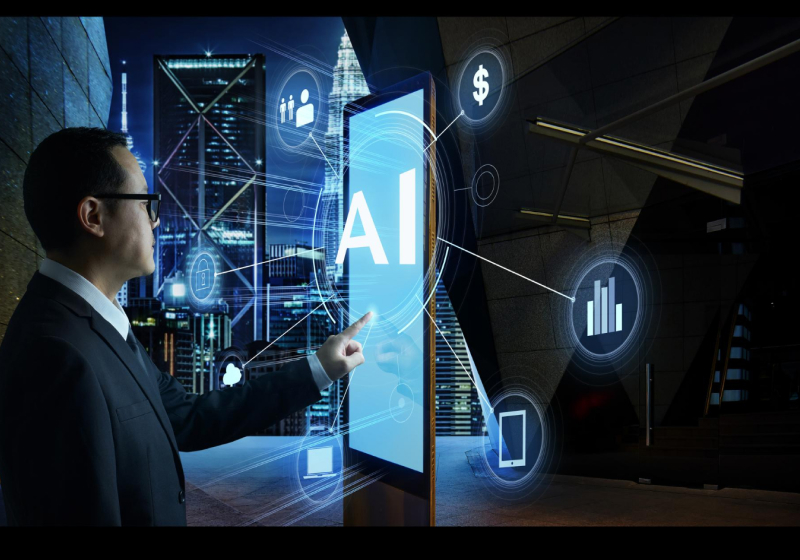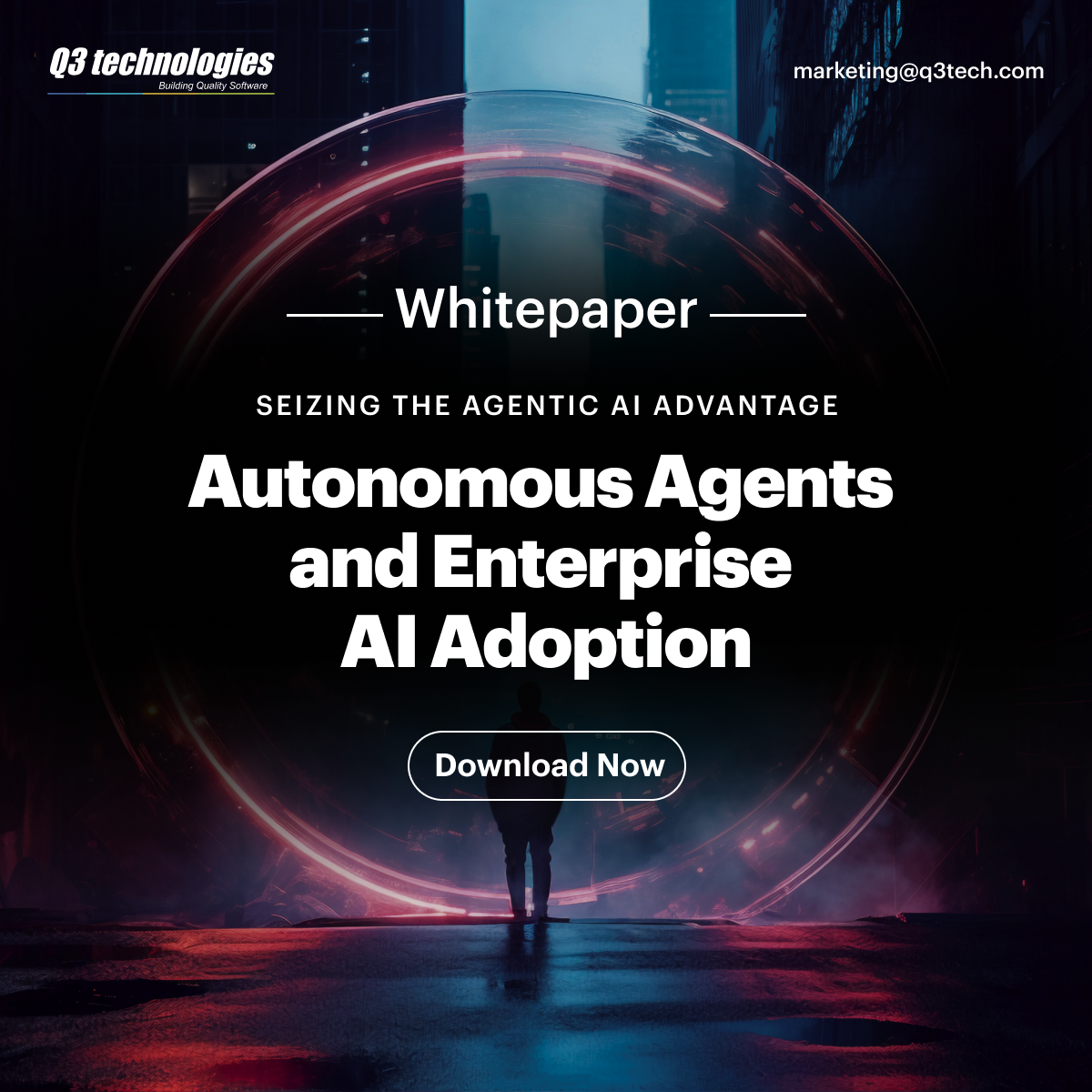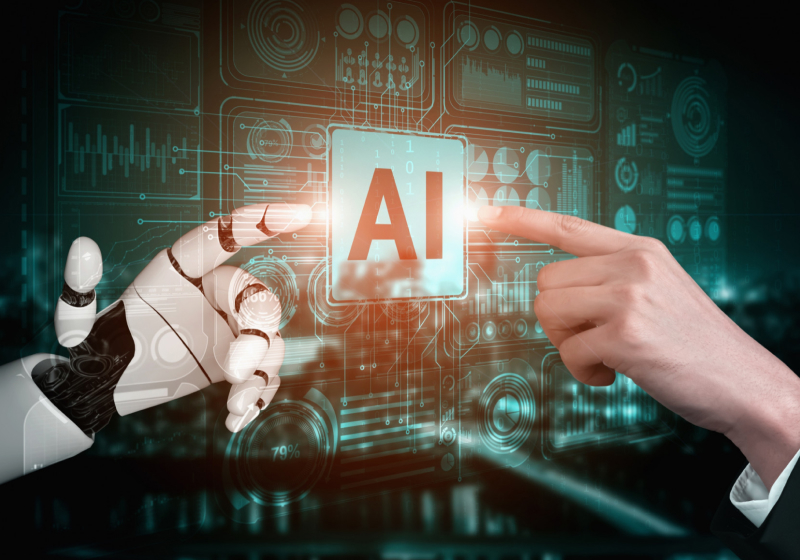AI
Top Multimodal AI Trends Shaping the Future: What to Expect in 2025 and Beyond
 Updated 23 Apr 2025
Updated 23 Apr 2025

The world of Artificial Intelligence (AI) is undergoing a seismic transformation, and at the heart of it is multimodal AI—a breakthrough innovation that’s redefining how machines understand and interact with the world. As we step into 2025, multimodal AI is no longer a futuristic concept; it’s here, powering applications that integrate text, image, audio, video, and even sensor data for more natural, human-like experiences.
According to MarketsandMarkets, the multimodal AI market is projected to grow from USD 1.4 billion in 2023 to USD 15.7 billion by 2030, at a CAGR of 41.2%. Meanwhile, Gartner predicts that by 2026, 60% of enterprise applications will be built using AI models that combine two or more modalities, making a multimodal generative AI an industry standard, not a luxury. With such explosive growth, it’s clear that multimodal artificial intelligence will play a pivotal role in shaping the future.
What Does “AI Trends” Mean?
AI trends refer to the emerging directions, innovations, and advancements in the field of Artificial Intelligence that are expected to influence industries, businesses, and consumers. These trends help organizations anticipate future developments and make strategic investments. In the context of multimodal AI, these trends highlight how various AI modalities—like language, vision, and sound—are being fused to build more powerful systems and multimodal AI agents.
What Does Multimodal Mean in AI?
Before diving deeper into trends, let’s clarify: What does multimodal mean in AI? Multimodal AI refers to artificial intelligence systems that can process and understand multiple types of data inputs simultaneously—like images, text, voice, and more. Unlike unimodal systems that rely on just one form of input, a multimodal generative AI leverages multiple modalities to understand context, make decisions, and generate outputs that are far more accurate and human-like.
Ready to build smarter AI solutions?
Partner with Q3 Technologies to develop custom multimodal AI applications tailored to your business needs.
Top Multimodal AI Trends Shaping the Future
Let’s explore the top multimodal AI trends that will define the next era of digital transformation in 2025 and beyond.
1. Unified Multimodal Foundation Models
AI models like OpenAI’s ChatGPT-4 and Google’s Gemini are moving towards unified architectures that can process and generate text, images, audio, and more. These multimodal foundation models offer one-stop solutions for a wide range of use cases—from customer support to creative content generation.
- They reduce the need for separate models for each data type.
- This trend leads to streamlined deployment across industries.
- It enhances performance by leveraging contextual data across modalities.
- Unified models also improve efficiency and scalability for enterprises.
2. Rise of Multimodal AI Agents
2025 will see a sharp increase in multimodal AI agents—autonomous systems capable of understanding and responding to users through various inputs like voice, image, and text. These agents are already transforming industries like healthcare, finance, and e-commerce.
- They provide more personalized and contextual responses.
- Agents can take action based on multiple inputs, not just one.
- They are ideal for virtual assistants, chatbots, and smart devices.
- The experience becomes more human-like and intuitive for users.
3. Generative AI Beyond Text: Audio, Video, and 3D
Generative AI is moving beyond just creating text. Now, it can generate synthetic audio, video, and even 3D objects using a multimodal generative AI framework. This is a game-changer for industries like entertainment, gaming, architecture, and education.
- It enables the creation of immersive environments and avatars.
- Video and voice synthesis are becoming ultra-realistic.
- It speeds up content creation pipelines by automating production.
- 3D model generation is now possible from just a few images or text prompts.
4. Enhanced Human-AI Collaboration
With the advent of multimodal capabilities, human-AI collaboration is becoming more intuitive. Users can now interact with AI using gestures, voice commands, and visual cues—leading to more accessible and engaging experiences.
- It supports workers in real-time decision-making tasks.
- Reduces learning curves for non-technical users.
- Boosts productivity by automating routine tasks with ease.
- Helps in sectors like manufacturing, design, and healthcare.
5. Real-Time Multimodal Analytics
Businesses are leveraging multimodal artificial intelligence to analyze real-time data streams across various inputs. For example, combining security camera feeds (video) with audio data and sensor alerts can improve situational awareness in security systems.
- It enhances anomaly detection in high-risk environments.
- Combines structured and unstructured data in one dashboard.
- Ideal for smart cities, logistics, and surveillance.
- Drives timely actions based on complex, real-world conditions.
6. Emotion Recognition with Multimodal Inputs
AI is learning to read human emotions more accurately by analyzing facial expressions, voice tone, and word choices together. This enables next-gen applications in customer service, mental health, and education.
- It allows for more empathetic human-machine interactions.
- Detects stress, happiness, confusion, and more in real time.
- Helps brands tailor support based on customer emotions.
- Valuable for remote learning and therapy platforms.
Inspired by Our Clients’ Success?
Connect with us today and take the first step toward your digital transformation.
7. Cross-Modal Retrieval and Search
Search engines powered by multimodal AI now let users query with text, voice, or image to find relevant results across multiple data types. This is revolutionizing e-commerce, digital libraries, and online research tools.
- Users can search by uploading images or speaking.
- Improves search accuracy and result relevance.
- Accelerates research by combining textual and visual data.
- Drives higher engagement in shopping and entertainment platforms.
8. Privacy-Preserving Multimodal Systems
As multimodal AI handles sensitive data like images, voice, and biometrics, privacy concerns are growing. Hence, new trends focus on federated learning and edge AI to ensure data security without compromising performance.
- Data remains local on user devices for better privacy.
- AI learns without centralizing sensitive information.
- Improves compliance with data protection regulations.
- Vital for sectors like healthcare, banking, and law enforcement.
9. AI for Accessibility and Inclusivity
Multimodal systems are improving accessibility by converting speech to text, text to speech, and enabling image description for the visually impaired. This aligns with global movements toward digital inclusivity.
- Breaks barriers for users with disabilities.
- Improves access to online education and digital tools.
- Helps create universal design systems across platforms.
- Boosts reach and engagement in underserved communities.
10. Industry-Specific Multimodal Use Cases
From precision farming in agriculture to predictive maintenance in manufacturing, multimodal AI is being customized for niche industry needs. These use cases are helping organizations gain deeper insights and optimize operations.
- Sensors, images, and logs are combined for smarter decision-making.
- Tailored solutions address specific pain points per sector.
- Improves operational efficiency and reduces downtime.
- Supports long-term strategic growth with actionable insights.
11. Training Data and Model Optimization
High-quality training data across modalities is essential for effective models. AI trends in 2025 will focus heavily on synthetic data generation and automated data labelling to accelerate training and reduce bias.
- Synthetic datasets fill real-world data gaps.
- Automation speeds up training pipelines.
- Better data leads to better decision-making capabilities.
- Reduces bias and enhances fairness in AI predictions.
12. Multimodal AI in Edge Devices
AI is being pushed to the edge—literally. Smartphones, drones, and IoT devices are now capable of running lightweight multimodal AI agents for instant processing without relying on cloud connections.
- It reduces latency for real-time applications.
- Improves energy efficiency in mobile devices.
- Supports offline functionality in remote areas.
- Ideal for autonomous vehicles, wearables, and field sensors.
Why Choose Q3 Technologies for Multimodal AI Solutions?
As businesses look to leverage the full potential of multimodal artificial intelligence, partnering with an experienced and innovative technology provider is crucial. This is where Q3 Technologies stands out as a leading Generative AI Development Company.
Expertise Across Modalities
Q3 brings proven experience in building and integrating AI solutions that work across text, vision, and voice data.
Custom AI Solutions
We develop tailor-made multimodal models based on your industry requirements to ensure maximum impact.
Future-Ready Infrastructure
Our team uses advanced tools, cloud platforms, and edge capabilities to future-proof your AI investments.
Scalable and Secure
We focus on security, scalability, and data privacy, ensuring your multimodal applications meet compliance standards.
Research-Driven Innovation
Our dedicated R&D team stays updated with the latest trends in a multimodal generative AI, helping you stay ahead of the curve.
Unlock the power of next-gen AI.
Schedule a free consultation with Q3 Technologies and start your journey toward intelligent automation.
Conclusion
Multimodal AI is the cornerstone of a smarter, more connected future. From multimodal AI agents and cross-modal search to emotionally intelligent systems and unified foundation models, the trends shaping 2025 and beyond are set to revolutionize how businesses operate and how humans interact with technology. If you’re ready to be a part of this transformation, Q3 Technologies—your trusted Generative AI Development Company—is here to help you innovate, integrate, and scale with confidence.
FAQs
What is multimodal AI?
Multimodal AI refers to artificial intelligence systems that can understand and process multiple types of data simultaneously, such as text, images, audio, video, and sensor inputs, to deliver more accurate and human-like results.
Why is multimodal AI important in 2025?
With increasing demand for more intuitive and intelligent applications, multimodal AI is critical for enabling seamless human-computer interaction, improving decision-making, and enhancing automation across industries.
How does multimodal AI differ from traditional AI?
Traditional AI models usually process a single type of input (e.g., just text or just images), while multimodal AI combines various data types to better understand context and deliver richer, more relevant outputs.
What industries benefit the most from multimodal AI?
Industries such as healthcare, finance, education, retail, manufacturing, and entertainment are leveraging multimodal AI for personalized services, predictive analytics, automation, and better user engagement.
What are multimodal foundation models?
Multimodal foundation models are large-scale AI models, like GPT-4 and Google Gemini, designed to handle multiple data types. They serve as a unified backbone for building diverse AI applications.
Can multimodal AI improve accessibility?
Yes, multimodal AI supports inclusivity by enabling features like speech-to-text, image descriptions, and real-time language translation, which help users with disabilities or those in underserved communities.
Is multimodal AI secure and privacy-compliant?
Modern multimodal AI systems increasingly adopt privacy-preserving methods like federated learning and edge computing to ensure user data remains local and secure while maintaining high performance.
How is generative AI evolving with multimodality?
Generative AI is expanding beyond text to create synthetic audio, video, and even 3D assets. This multimodal evolution is revolutionizing content creation, gaming, virtual environments, and digital media.
What are multimodal AI agents?
Multimodal AI agents are intelligent systems capable of interacting with users via text, voice, visuals, and other inputs, offering more personalized, human-like, and context-aware responses.
Why choose Q3 Technologies for multimodal AI development?
Q3 Technologies offers deep expertise across modalities, scalable custom solutions, future-ready infrastructure, and strong data privacy measures—making them a trusted partner for advanced AI transformation.



